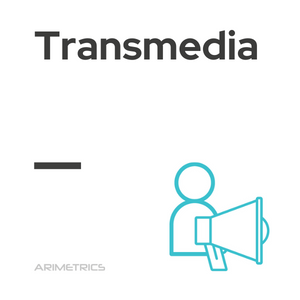 Definition:
Definition:
Transmedia is a form of storytelling in which a story unfolds across multiple media and communication platforms. This approach allows consumers to take an active role in the process of expanding and developing the narrative. Although the term is common in marketing, its practical implementation is less frequent due to the complexity involved.
In a multi-screen world, where people interact simultaneously with television, social networks such as Instagram and Facebook, and messaging apps such as WhatsApp, transmedia is presented as a technique that divides or develops a story across multiple platforms to form a coherent narrative. It not only involves the use of multiple broadcast channels, but also seeks to expand a story through unique narrative pieces in each medium, with the aim of actively engaging the audience.
What transmedia is for
Transmedia offers a way to create unique experiences for users, making them part of an immersive narrative that attracts them to what a brand proposes. It is a way to exploit creativity by using different media and languages to communicate any idea, becoming a powerful tool to generate a community around the brand. In addition, transmedia allows the brand to be close to the audience, keeping their interest in potential products or services. It seeks to capture attention, attract attention and become an effective tool to increase visibility and customer loyalty.
Formats for transmedia
To develop a transmedia content strategy, various formats can be used, such as:
- Publications in social networks: They include videos, surveys, images, podcasts, reels, among others.
- Applications: They range from video games to applications that improve or facilitate the lives of customers.
- Interactive videos and QR codes: Interactive videos adapt traditional media to a modern context, while QR codes expand on the information of a product or service.
- Video games: They use the game experience as a mechanism to generate a transmedia narrative.
- Radio programs or podcasts: Generate expectation and intrigue, encouraging conversation about the brand or product.
- Films
- Events: Engage the story of a campaign in interactive events.
- Television series: They use characters from movies and series to create alternative stories.
Benefits of transmedia
The transmedia approach offers several significant benefits for both brands and their audiences:
- Increased audience participation: By allowing consumers to interact and contribute to the development of the story, a higher level of engagement and brand loyalty is generated.
- Extending reach: Using multiple platforms allows you to reach different audience segments that may prefer different content formats.
- Narrative deepening: Each medium offers the opportunity to explore different aspects of the story, enriching the overall user experience.
- Creative innovation: Transmedia fosters creativity by allowing brands to experiment with different forms of storytelling and content.
- Improved brand recognition: By being present in multiple channels, the brand increases its visibility and recognition in the market.
